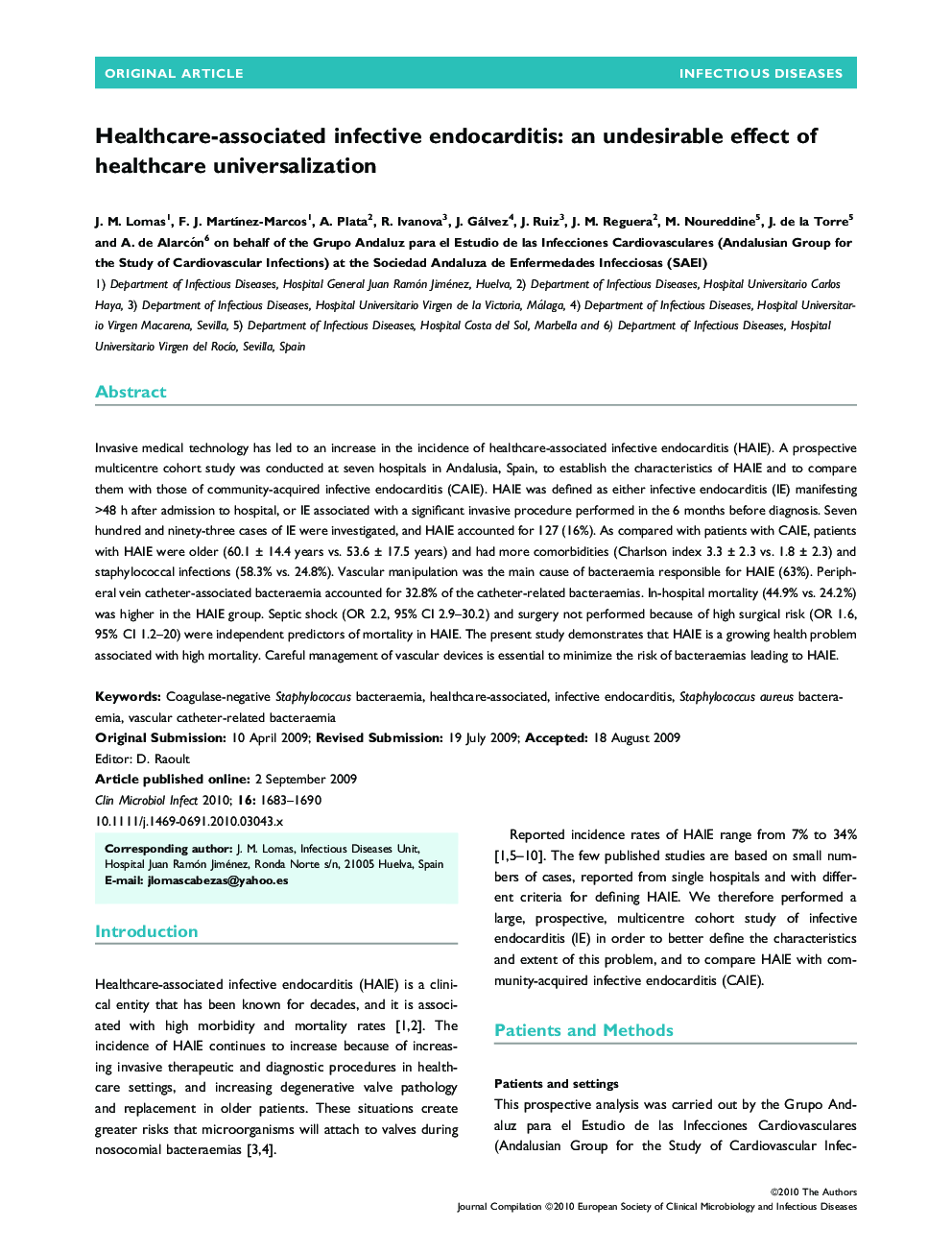| Article ID | Journal | Published Year | Pages | File Type |
|---|---|---|---|---|
| 6131286 | Clinical Microbiology and Infection | 2010 | 8 Pages |
Abstract
Invasive medical technology has led to an increase in the incidence of healthcare-associated infective endocarditis (HAIE). A prospective multicentre cohort study was conducted at seven hospitals in Andalusia, Spain, to establish the characteristics of HAIE and to compare them with those of community-acquired infective endocarditis (CAIE). HAIE was defined as either infective endocarditis (IE) manifesting >48 h after admission to hospital, or IE associated with a significant invasive procedure performed in the 6 months before diagnosis. Seven hundred and ninety-three cases of IE were investigated, and HAIE accounted for 127 (16%). As compared with patients with CAIE, patients with HAIE were older (60.1 ± 14.4 years vs. 53.6 ± 17.5 years) and had more comorbidities (Charlson index 3.3 ± 2.3 vs. 1.8 ± 2.3) and staphylococcal infections (58.3% vs. 24.8%). Vascular manipulation was the main cause of bacteraemia responsible for HAIE (63%). Peripheral vein catheter-associated bacteraemia accounted for 32.8% of the catheter-related bacteraemias. In-hospital mortality (44.9% vs. 24.2%) was higher in the HAIE group. Septic shock (OR 2.2, 95% CI 2.9-30.2) and surgery not performed because of high surgical risk (OR 1.6, 95% CI 1.2-20) were independent predictors of mortality in HAIE. The present study demonstrates that HAIE is a growing health problem associated with high mortality. Careful management of vascular devices is essential to minimize the risk of bacteraemias leading to HAIE.
Related Topics
Life Sciences
Immunology and Microbiology
Microbiology
Authors
J.M. Lomas, F.J. MartÃnez-Marcos, A. Plata, R. Ivanova, J. Gálvez, J. Ruiz, J.M. Reguera, M. Noureddine, J. de la Torre, A. de Alarcón,
